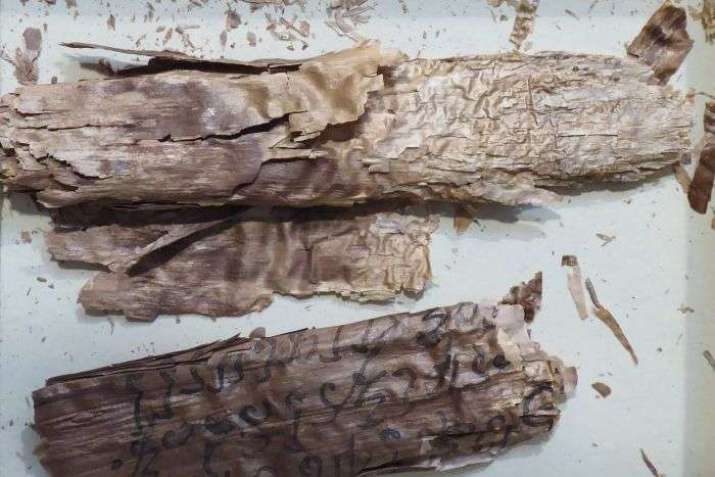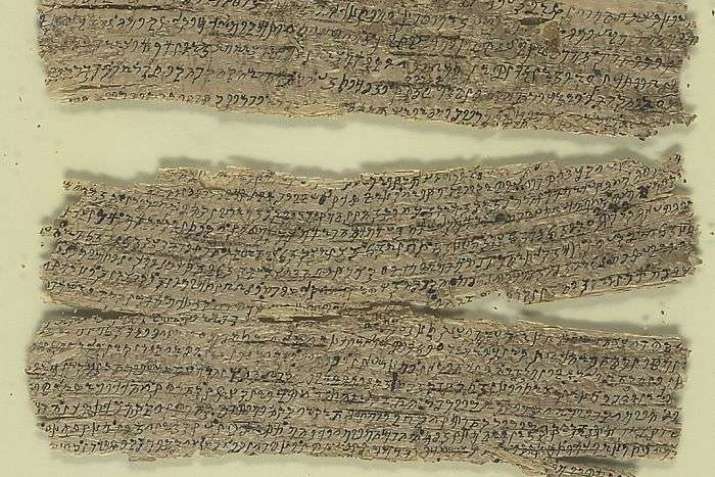
Researchers at the University of Sydney may be a step closer to helping Buddhist scholars understand and share the ancient wisdom contained within 2,000-year-old Gandharan manuscripts, and through their painstaking work, digitized versions of the centuries-old texts should soon be made accessible to the public.*
Dr. Mark Allon and his team are carefully digitizing some of these crumbling Buddhist texts—that have only recently been teased open—which could offer key insights into the early development of Buddhism in South Asia.
Sometimes compared with the Dead Sea Scrolls—Jewish religious manuscripts found in the Judaean Desert and dated to the last three centuries BCE and the first century CE—in terms of their impact on Biblical scholarship, the Gandharan collection of birch bark writings may represent the oldest surviving Buddhist texts—and also the oldest South Asian manuscripts—ever discovered.
Allon is one of just 20 people in the world with the ability to read the ancient script contained within the landmark documents, which, he says, offer researchers a hitherto unobtainable glimpse of early Buddhism, taking them “way, way back.” (ABC News)
“It’s taking us very close, closer to the Buddha,” said Allon. (ABC News)
In the mid-1990s, some 200 Buddhist manuscripts were unearthed on the northern border between modern-day Afghanistan and Pakistan. The texts originated in the ancient kingdom of Gandhara, which existed in the Peshawar Basin in the northwestern portion of South Asia between 1500 BCE and 535 CE. Many scrolls were also found in caves in Afghanistan’s Bamiyan Province after the Taliban destroyed the famed sixth century Buddhas of Bamiyan rock carvings.
At its height from the first century to the fifth century CE under the Kushan empire, Gandhara flourished as the crossroads of Asia, linking trade routes that enabled the transfer of cultural influences from across the region. The kingdom acted as a gateway for the migration of Buddhist thought and culture—which thrived there until the eighth or ninth century, when Islam began to gain influence—from India into Tibet, China, and beyond.
Although the manuscripts are almost certainly the earliest known Buddhist works, the researchers involved with the project noted that they should not be interpreted as offering direct contact with the word of the Buddha.
“Writing is not used until many hundreds of years later,” said Allon, describing the texts as “very formulaic, structured, and repetitive, so that the . . . ideas could be transmitted faithfully.” (ABC News)
“What we get is a very vivid picture of how the people of that time conceived of the Buddha,” said Prof. Richard Salomon, an ancient languages specialist from the University of Washington in Seattle who helped to authenticate the manuscripts. (Los Angeles Times)
The texts, which contain prayers, Jataka tales of the Buddha’s past lives, monastic training rules known as Vinaya, and philosophical discourses, spent some 2,000 years folded up and interred in clay pots.
“They are cigar-like . . . they are very fragile. You need to expose them to moisture over several days and then slowly tease out the layers,” observed Allon, who has spent decades working with these texts. “They are very fragmentary. They fall to pieces.” (ABC News)

Inspired by the Buddhist teachings as a university student, Allon opted to study ancient languages so that he could read the teachings in their original scripts, learning Sanskrit, Pali, Tibetan, and some Chinese.
“I realized that I really wanted to access the texts myself and not rely on somebody else’s translation, which can be problematic,” he explained. “And the only way I could get to them was through the study of language.” Despite his decades of research, Allon noted that he still has much to learn: “I’m still very personally interested, but of course this [research] is just a bottomless pit. You get sucked in.” (ABC News)
The British Library acquired a collection of scrolls in 1994, and in 1996 the Early Buddhist Manuscripts Project (EBMP) was founded at the University of Washington “to promote the study, edition, and publication of 27 unique birch‐bark scrolls, written in the Kharoshi script and the Gandhari language.” (University of Washington)
Further discoveries have greatly increased the number of known Gāndhārī manuscripts, and the EBMP is currently involved in the study of seventy‐six birch‐bark scrolls (primarily in the British Library, the Senior Collection, the University of Washington Libraries and the Library of Congress) as well as numerous smaller manuscript fragments (in the Schøyen Collection, the Hirayama Collection, the Hayashidera Collection and the Bibliothèque nationale de France). These manuscripts date from the first century BCE to the third century CE, and as such are the oldest surviving Buddhist manuscripts as well as the oldest manuscripts from South Asia. They provide unprecedented insights into the early history of Buddhism in South Asia as well as its transmission to Central Asia and China. The research results of the EBMP and translations of the manuscripts are published by the University of Washington Press. (University of Washington)
The EBMP is a collaborative effort conducted by scholars in the US as well as in Australia, Germany, and Japan. Project members are engaged in the publication of scholarly editions and annotated translations and producing the first dictionary of the Gandhari language, compiled using modern digital technology with rigorous linguistic scholarship.
* University of Sydney in Australia Seeks Crowdfunding for Gandhari Buddhist Texts (Buddhistdoor Global)
See more
Crumbling cigars of bark bring scholars one step closer to ancient words of Buddha (ABC News)
British Library Acquires Buddhist ‘Dead Sea Scrolls’ (Los Angeles Times)
Indian Buddhism: Birch-bark treasures (Science Daily)
The Early Buddhist Manuscripts Project (University of Washington)
The University of Washington – Early Buddhist Manuscripts Project (Tsadra Foundation)
Gandharan Scrolls (British Library)












